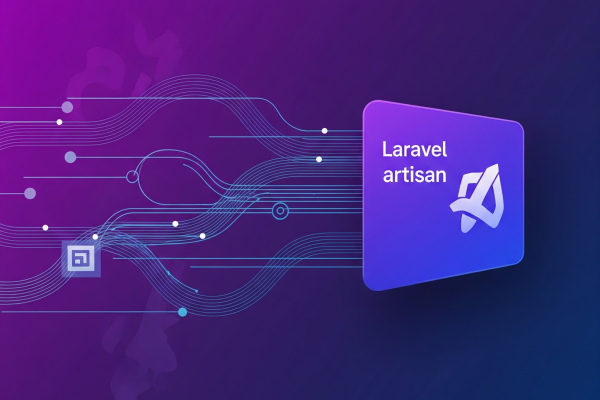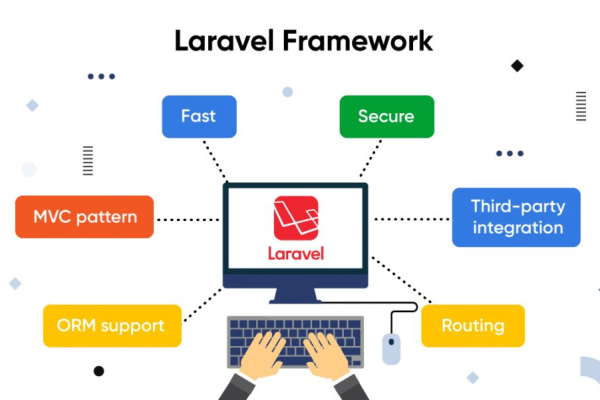Code and Frameworks
My playground of precision and creativity—where Laravel meets logic, Django dances with design, and every post uncovers the quirks, power, and poetry of building with code. From epic debugging tales to elegant snippets.

Is your Laravel application feeling sluggish? Slow page loads, delayed responses, and a less-than-stellar user experience can quickly turn visitors away. But fear not! Laravel, with its elegant syntax and powerful features, also provides a wealth of tools and strategies to optimize your application for peak performance.
In this post, we'll dive into some of the most impactful techniques to supercharge your Laravel app, focusing on caching, eager loading, database indexing, and other essential tips.
1. Harness the Power of Caching
Caching is your first line of defense against performance bottlenecks. By storing frequently accessed data in memory or fast storage, you drastically reduce the number of times your application needs to hit the database or perform expensive computations.
Laravel offers various caching drivers:
File (Default): Simple to set up, but less performant for larger applications.
Redis/Memcached: Recommended for production environments. These in-memory key-value stores offer lightning-fast retrieval times.
Database: Stores cache data in a database table. Useful if you need persistence and don't want to manage a separate caching server.
Where to apply caching:
Configuration Caching:
This compiles all your configuration files into a single file, making Laravel load faster. Remember to re-run this command after any configuration changes.
php artisan config:cache
Route Caching:
For applications with many routes, caching them significantly speeds up route registration.
php artisan route:cache
View Caching:
Pre-compiles your Blade templates, reducing the overhead of parsing them on each request.
php artisan view:cache
Application-Level Data Caching: Use Laravel's Cache facade to store results of expensive queries, API responses, or computed data.
// Cache a query result for 60 minutes
$users = Cache::remember('all_users', 60, function () {
return User::all(); }); // Store a specific value
Cache::put('product_details_' . $productId, $product, $minutes);
Full Page Caching (Advanced): For static or rarely changing pages, consider caching the entire HTML response using packages or a reverse proxy like Nginx.
2. Master Eloquent Eager Loading (Banishing the N+1 Problem)
One of the most common performance killers in Laravel is the "N+1 query problem." This occurs when you retrieve a collection of models and then loop through them, lazy-loading their relationships one by one. This results in N additional queries (where N is the number of models) plus the initial query.
Example of N+1 problem (Lazy Loading):
$posts = Post::all(); // 1 query
foreach ($posts as $post) {
echo $post->user->name; // N queries to fetch each user
}
Solution: Eager Loading with with()
Eager loading allows you to load all related models in a single, optimized query.
$posts = Post::with('user')->get(); // 2 queries (one for posts, one for users)
foreach ($posts as $post) { echo $post->user->name; }
Advanced Eager Loading:
Loading Multiple Relationships: Post::with(['user', 'comments'])->get()
Nested Eager Loading: Post::with('user.profile')->get()
Conditional Eager Loading: Post::with(['comments' => function ($query) { $query->where('approved', true); }])->get()
Preventing Lazy Loading in Production: You can prevent accidental lazy loading in your production environment by calling Model::preventLazyLoading() in your AppServiceProvider's boot method.
3. Strategic Database Indexing
Your database is often the bottleneck. Proper indexing is crucial for speeding up SELECT queries, especially on large tables. Indexes allow the database to quickly locate data without scanning the entire table.
When to use indexes:
Foreign Keys: Always index foreign key columns to optimize JOIN operations. Laravel's migrations automatically add indexes for foreign keys defined using foreignId().
Columns in WHERE clauses: If you frequently filter records based on a specific column (e.g., status, type, email), an index on that column will significantly speed up queries.
Columns in ORDER BY clauses: Indexing columns used for sorting can help the database return ordered results faster.
Composite Indexes: For queries filtering on multiple columns (e.g., WHERE status = 'active' AND created_at > '...'), a composite index on (status, created_at) can be highly effective.
Adding Indexes in Laravel Migrations:
Schema::table('products', function (Blueprint $table) {
$table->index('category_id'); // Single column index
$table->index(['status', 'created_at']); // Composite index
$table->unique('sku'); // Unique index (also creates an index)
});
Important Considerations:
Over-indexing: Too many indexes can slow down INSERT, UPDATE, and DELETE operations as the database needs to maintain more index structures.
Analyze Query Plans: Use database tools (like EXPLAIN in MySQL) to understand how your queries are being executed and identify missing indexes or inefficient query patterns.
Regular Monitoring: Monitor your database performance and adjust indexes as your application's data and query patterns evolve.
4. Other Essential Performance Tips
Beyond the big three, several other practices can significantly improve your Laravel application's performance:
Use the Latest PHP and Laravel Versions: Each new PHP version brings significant performance improvements. Similarly, Laravel actively optimizes its framework with every release.
Optimize Composer Autoloading:
This command generates a "classmap" for faster autoloading in production.
composer dump-autoload --optimize
Queue Long-Running Tasks: Don't let time-consuming operations (sending emails, processing images, generating reports) block your HTTP requests. Push them to a queue using Laravel's robust queue system (with drivers like Redis or database).
dispatch(new ProcessPodcast($podcast));
Optimize Assets (CSS, JavaScript, Images):
Minify: Use Laravel Mix (Webpack) to minify CSS and JavaScript files, reducing their size.
Concatenate: Combine multiple CSS and JS files into fewer requests.
Compress Images: Use tools like TinyPNG or image optimization libraries to reduce image file sizes without sacrificing quality.
Use a CDN: Deliver static assets from a Content Delivery Network for faster global access.
Paginate Large Datasets: Never fetch thousands of records at once. Use Laravel's pagination features to break down large result sets into smaller, manageable chunks.
$users = User::paginate(15);
Select Only Necessary Columns: When querying the database, avoid select('*') unless truly needed. Fetching only the columns you're using reduces memory consumption and data transfer.
$users = User::select('id', 'name', 'email')->get();
Review Middleware: While powerful, excessive middleware on every request can add overhead. Review your middleware stack and remove any unnecessary entries for specific routes.
Use Tools for Profiling:
Laravel Debugbar: An excellent development tool to inspect queries, views, and more.
Laravel Telescope: A powerful debugger for production environments, offering insights into requests, queues, mail, and more.
Xdebug: A PHP debugger that can profile your application's execution time and memory usage.
Utilize JIT Compiler (PHP 8.x+): PHP 8 introduced a Just-In-Time (JIT) compiler, which can significantly boost performance for CPU-bound tasks. Ensure your server is running a recent PHP version.
Choose a Fast Web Server and PHP-FPM Configuration: Ensure your web server (Nginx or Apache) and PHP-FPM are properly configured for optimal performance.
Conclusion
Optimizing a Laravel application is an ongoing process, not a one-time task. By systematically applying these techniques – from strategic caching and eager loading to smart database indexing and general best practices – you can significantly improve your application's speed, responsiveness, and overall user experience. Regularly monitor your application's performance, identify bottlenecks, and continuously refine your optimization strategies to keep your Laravel app running at its best. Happy coding!

I've been tinkering with code for a while now, those late nights fueled by chai and the sheer excitement of making something appear on a screen. But when it came to tackling my first real project – something beyond simple scripts and tutorials – the sheer number of choices for backend frameworks was honestly overwhelming. It felt like standing in the bustling Patna market, surrounded by incredible options, but not quite knowing where to start.
After weeks of research (and probably annoying every tech-savvy friend I have!), I finally landed on Laravel. And honestly? Looking back, it feels like the right decision for a newbie like me. Now, before you jump to the conclusion, let me share my thought process – the beginner's logic that led me to the PHP-powered world of Laravel, and why it might resonate with you if you're just starting your coding adventure.
One of the biggest draws for me was the reputation for being beginner-friendly. Everywhere I looked – online forums, YouTube tutorials, even chats with local developers here in Patna – Laravel kept popping up as the "go-to" framework for those just starting their web development journey. The promise of clear documentation and a welcoming community was a huge comfort when the thought of building a full-fledged application felt like climbing Mount Everest in flip-flops.
Then there was the "magic" – in a good way! I kept hearing about Laravel's elegant syntax and built-in features. Things like the Blade templating engine, which made designing the frontend feel less daunting, and the Eloquent ORM, which simplified database interactions, seemed like superpowers for someone who was still wrapping their head around basic PHP. It felt like Laravel provided a well-structured playground where I could focus on the logic of my application without getting bogged down in too much boilerplate code.
The vibrant and active community was another significant factor. Knowing that there's a huge online community, always ready to help with questions and share resources, was incredibly reassuring. Plus, finding Laravel-specific tutorials and packages felt much easier compared to some other frameworks I explored. This accessibility of learning materials, especially tailored for beginners, made the learning curve feel a little less steep. Imagine having a huge study group available 24/7 – that's what the Laravel community felt like.
Finally, I also considered the job market and local relevance. While I'm learning primarily for the joy of creation right now, knowing that Laravel is a widely used framework, even within the tech scene in India, felt like a smart move for the future. It's like learning a language that's spoken by many – it opens up more opportunities down the line.
Now, For my first big leap into web development, Laravel's perceived beginner-friendliness, elegant structure, strong community, and readily available resources tipped the scales.
So, if you're a fellow coding newbie staring at the vast landscape of backend frameworks, feeling a bit lost like I was in that Patna market, take a good look at Laravel. Its welcoming nature and helpful tools might just be the perfect launchpad for your own exciting development journey. What framework did you choose for your first project, and why? Share your experiences in the comments below – I'd love to hear about them!



